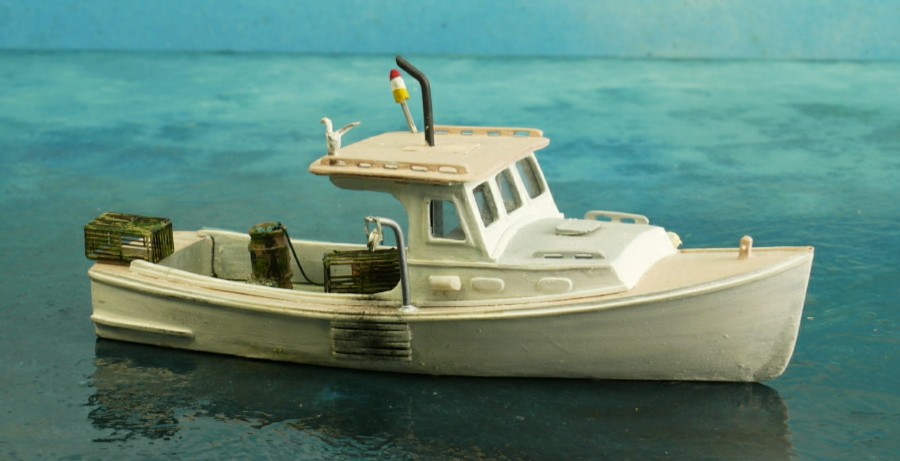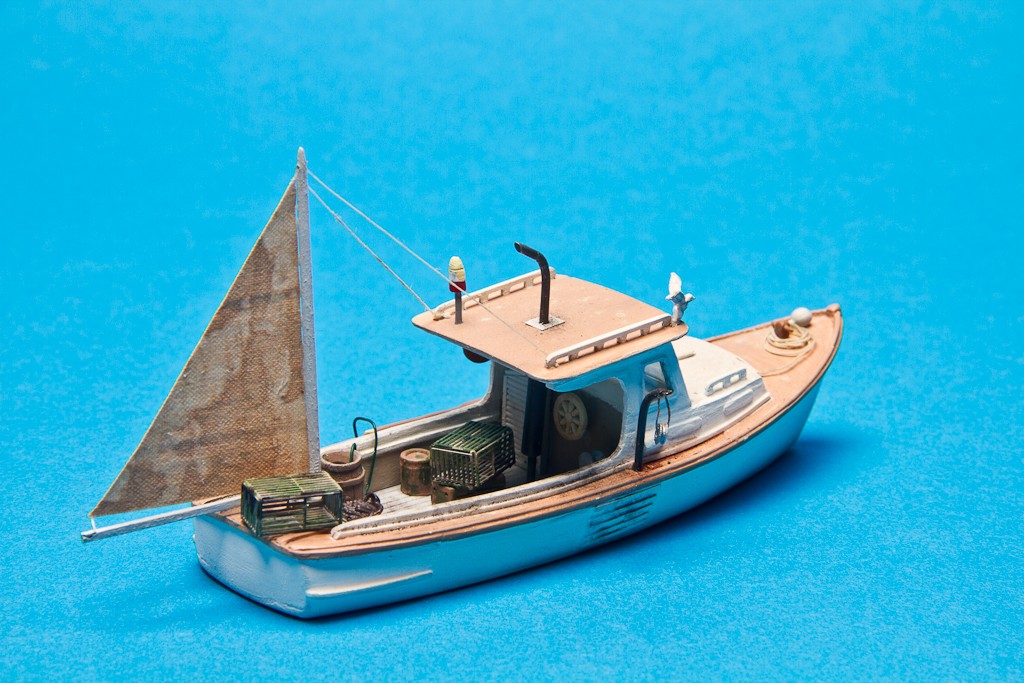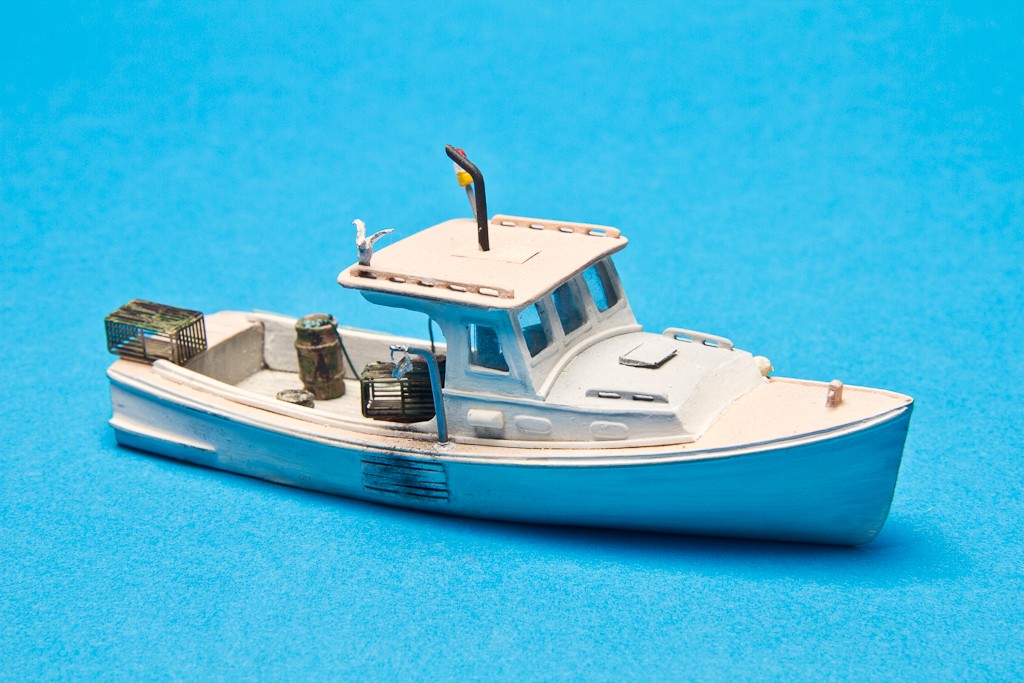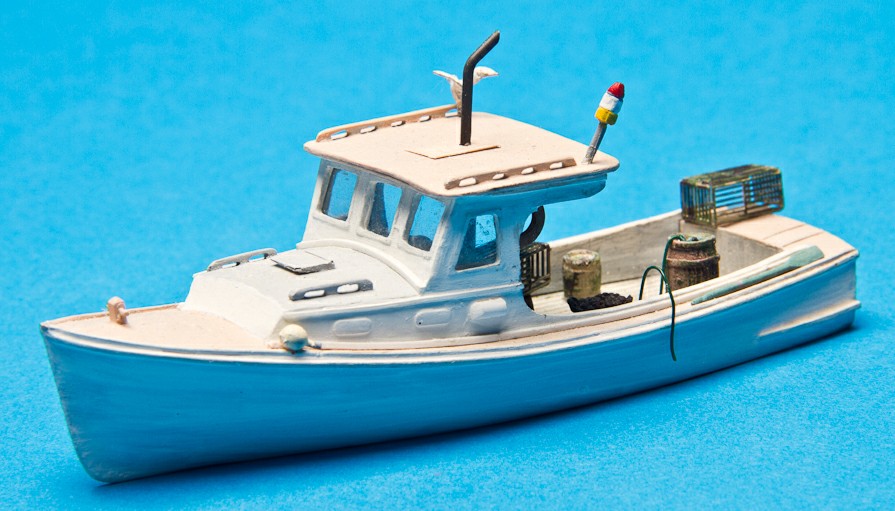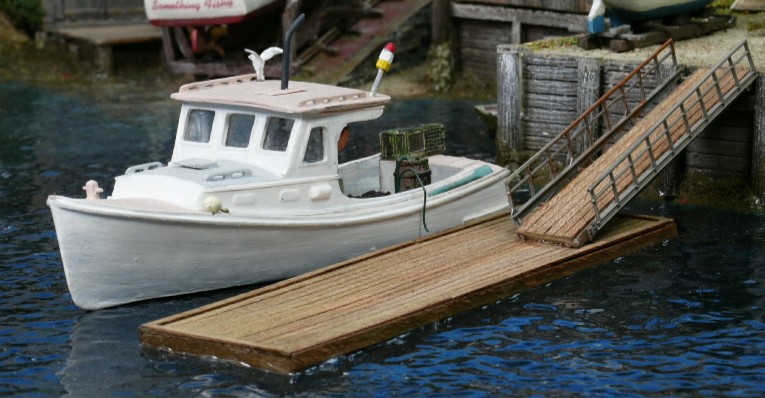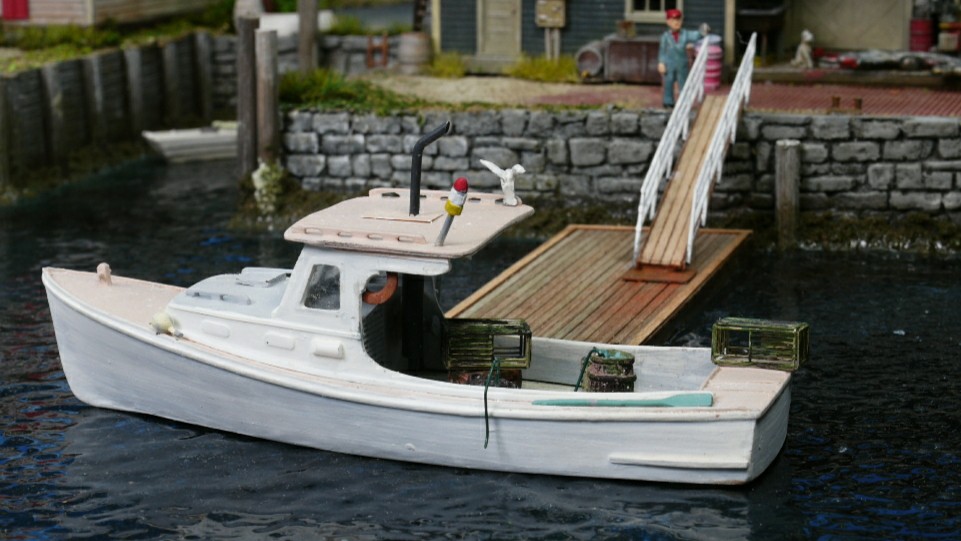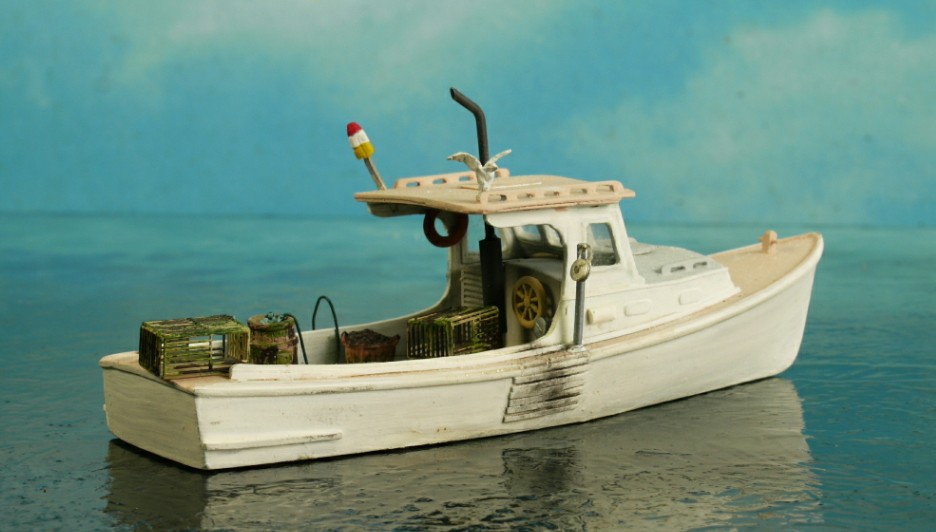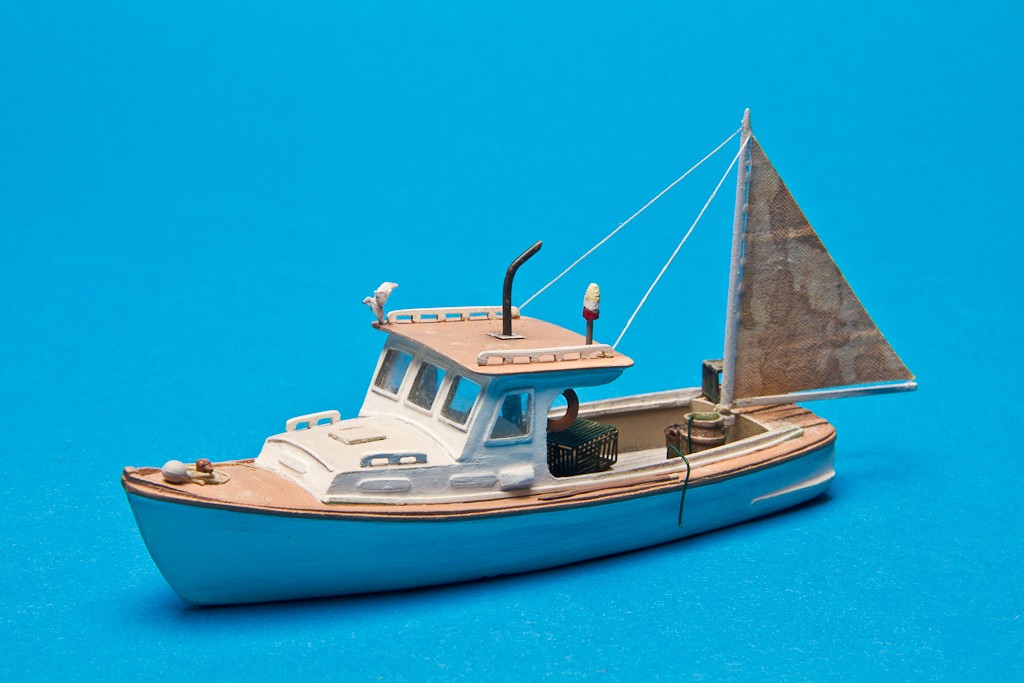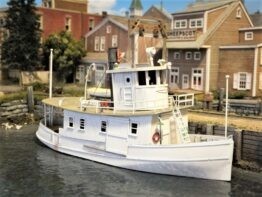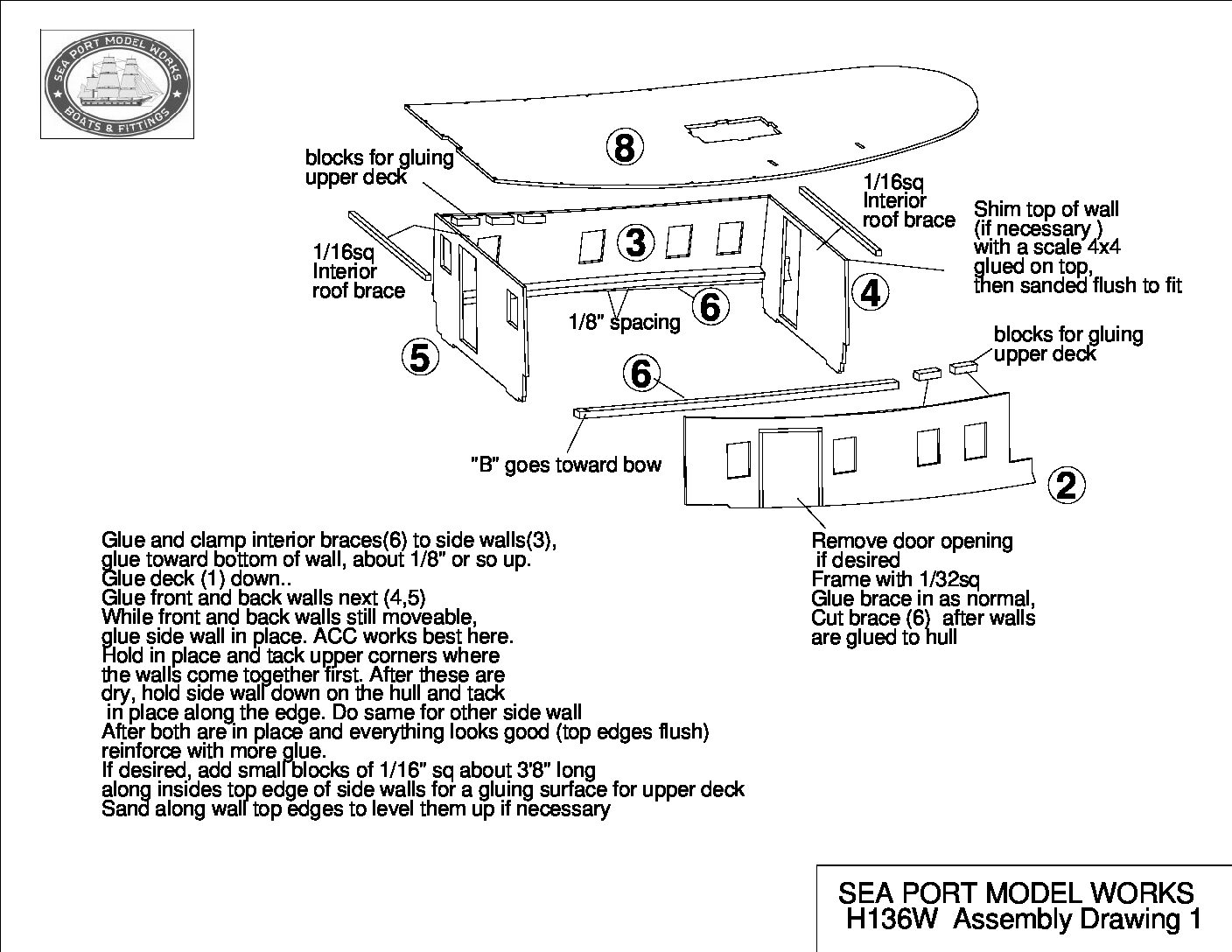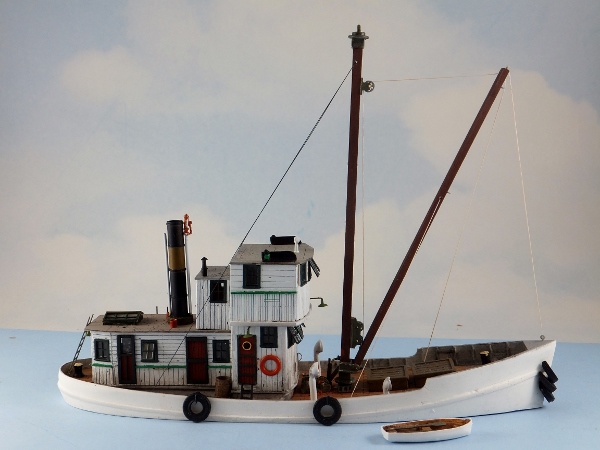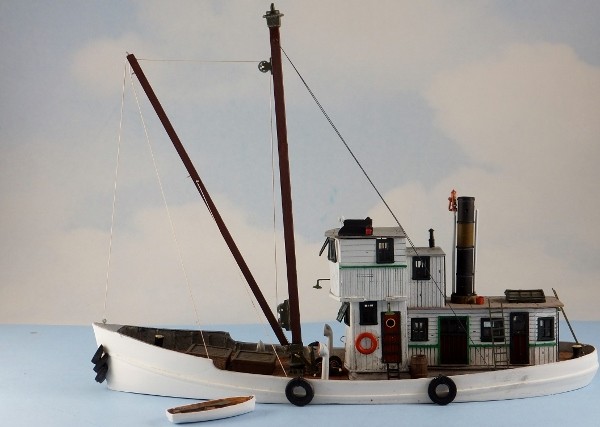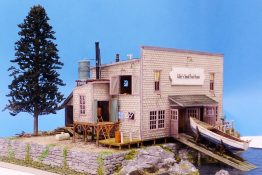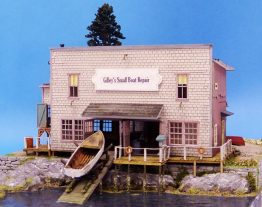Description
Resin – Metal – Wood
Actual size: Length: 4-5/8 in. Width: 1-9/16 in.
Kit Features: Our polyurethane resin waterline hull & parts have extensive detail that will save many hours of work. The one-piece RESIN hull has planking and deck cast in. Special cast white metal detail parts designed especially for this kit.
All parts & instructions included in this kit for full assembly. Made in USA. Recommended for ages 12 years and older.
The H128-1 port wall and starboard wall each have one window. The roof is the short length.
For the full hull version of this kit see our H132-1 HO Full Hull kit
More about our kits: When you purchase our HO 34’ Maine Lobster Boat, we sincerely believe you will enjoy it and find that it brings further realism to your layout or gives you pleasure just looking at it on your desk, mantle, or bookcase. This model is unique as it was designed for model railroaders and no model ship building skills are required.
We offer this waterline kit in six different designs and also offered in the full hull version (H132) in the same six designs. The difference between each has a lot to do with its desired use on the water/layout or diorama. Is it a working craft (for lobstering) or a pleasure/cruiser type craft? If you want the boat in the water then the waterline is for you in any of the six different designs or one of each to create a fleet of craft. If you want the boat sitting high and dry in the boat yard for repair or storage, on the rail awaiting a bottom cleaning, or sitting on your desktop or shelf, then the full hull (H132) is what you need.
If it is a working craft it will probably have a cockpit that is open to the elements on one side or the other that allows the skipper access to the wheel and the snatch block at the same time. This equipment location gives the skipper the ability to haul traps and maneuver the craft at the same time. Our kits, depending on which kit you are building, offer the pot hauling ability on either side and could have multiple windows on the either side and even a semi enclosed rear wheelhouse wall. If it’s use is for pleasure or other than lobstering it is apt to have multiple windows on both sides and perhaps a semi or fully closed rear wheelhouse wall. For the purpose of differentiating one kit to another we have decided to use the design of the wheelhouse as the key element. The number of windows on the port and starboard walls, the length of the canopy/roof, and the amount of closure in the rear wheelhouse wall determine the type of wheel house.
Specifications:
Length……………………………………. 34’
Beam…………………………………….…11’
Built…………………………………… 1930 – 1960 Kittery Maine
Construction material………………. wood
Engine…………………………………… gasoline
Purpose………………………………… .Lobstering
The above specifications, some are bogus and some are not.
Our “HO” version of a 34’ lobster boat has been a common sight along the eastern seaboard of Canada and the United States since the 1930 s. Lobstering was done prior to 1930 s and here is a little history. In 1860 there was a boat called the “Reach Boat” 11 – 22 feet long, and powered by rowing or sail. In 1870 we had the “Peapod” about 15 feet long and rowing and sail moved it along. In 1890 there was the “Sloop Boat” 22 – 32 feet long and powered by sail. In 1910 came the “Hampton Boat” 17 – 24 feet long powered by sail and gasoline engine. By the way this boat was built in the Hampton N.H. area. 1920 saw the “Torpedo Stern” measuring 20 to 35 feet in length and powered by an engine. In 1930 came the “Razor Case”. Speed was on their minds.
There is a lot of wonderfully interesting history about this Industry, it’s craft and it’s people.
Note that information we present to you regarding dates, craft sizes, and power source were taken from books and on-line sources. We found it interesting that some of the technical data is not generally agreed upon from one source to another. Our spending much of our lives “ playing around with boats” in various harbors has allowed us some first hand knowledge. We have taken a mixture of each and presented you with information and a kit that we hope represents this industry of lobstering.
In the 1930s the boats tended to be around 25’ in length with a length to breadth ratio of as much as 4 to 1 in an attempt to increase speed. Engine capacity was limited, speed was important, so design was important. As increased power became available and boats were being used for multi tasks they became wider and longer. Inshore lobstering is done in boats approx. 24 to 34 foot long for better maneuverability and larger boats for offshore lobstering.
These are a hard working craft. Their Captains often work alone, running the boat, baiting-setting-and hauling traps, watching the currents-tides-weather, and a hundred other things to worry about including getting his catch to market fresh and getting a reasonable price in a fluctuating market. If the Captain ( often the owner ) is fortunate to have a stern man than he has someone to share his profits with. If there are no profits he still has someone to share them with.
Characteristics of a lobster boat are: Round bottom, double –wedge hull A single inboard gas or diesel engine A small forward cabin and windshield shelter for the helmsman Open, decked cockpit aft Length varies from 20 – 50 feet Traditionally built of wood ( cedar planking over oak frames ), began to be replaced by fiberglass hulls by the early 1960s Electronic equipment, such as radar, radio, and depth sounder
(The previous characteristics were taken partly from www.gma.org/lobsters/boats.html)
Our Lobster boat has a low “trunk cabin” forward and this provides some protection from the elements but certainly not a parlor. Aft of the trunk cabin, about amidships, there is a standing shelter with a windshield and roof. We will refer to this as a “wheelhouse” or “pilot house”. This shelter may be enclosed on all sides or completely open to the weather. Removable panels might be used to provide seasonal protection. This is where the Captain maneuvers the vessel with the ships wheel and engine controls, and hauls his traps, with the hydraulic hauler and snatch block. Operating the boat and hauling traps is often done simultaneously. Protruding from the canopy/roof you find a smoke stack. Hand- rails on the canopy top and bottom allow a person some stability when in rough seas. A bait barrel will be found in the cockpit with a hose running to a water source. Trap skids will be found on the top of the transom bulkhead to receive traps as they are dropped into the sea with their respective pot buoy. A mooring bit will be found in the middle of the forward deck from which the boats mooring ball is tied off to when in harbor. Rubbing strakes will be found on the outside of the boat in the freeboard area just below the snatch block that protects the sides of the hull from damage when the pots are hauled. A lobster trap is found in some location on the boat. If just hauled it would be on the rail next to the snatch block. If ready to be set then on the trap skids on the transom bulk head, or you might just see one on the roof with a pot buoy sticking out of it for identification.
Maine Lobster boats are best known for their distinctive graceful upward curve of the rail, low in the stern creating low freeboard (distance from rail to water) and high in the bow (stem). The low freeboard makes for easier handling of the heavy traps from water to rail.
The bow of the hull has a sharp “V” and the stern is flat.
There are two types of hull configurations 1. Built down 2. Skeg built
The built down provides a smooth transition from the bilge to the keel. The skeg-built is built with an external keel-not the smooth transition of the built down. See our drawing of the two hull configurations
Much of the previous information regarding our lobster boat was taken from the book “Maine Lobster Boats” by Virginia L. Thorndike.
Other books that we used for research that you might find helpful and interesting are: Lobstering and the Maine Coast by Kenneth R. Martin and Nathan Lipfert The Lobster Gangs of Maine- by James M Acheson The Salt Book-edited and introduction by Pamela Wood Boat Modeling the Easy Way- by Harold “Dynamite” Payson Boatbuilding Down East- by Royal Lowell The Lobster Boat- by Rogers & Patricia Staby-Rogers
This is only a partial list of the many fine research books that have been put to print. I hope building this model inspires you to seek out a book, museum, on line resource, etc. to enjoy the full scope of this marvelous industry. There are many resources, contact us and we will be happy to direct you to the ones we are aware of.
*****A VISIT TO THE MAINE MARITIME MUSEUM IN BATH , MAINE will be helpful as they have set aside a full building for “LOBSTERING AND THE MAINE COAST” and their vessels”
We want to acknowledge a couple of key players in the development of this kit:
George Barrett of “Sheepscot Scale Products”, 2 Country Charm Road, Cumberland, Maine 04021 for his important insight and design talents that allowed us to release a kit so close to the prototype.
Jerome A. Morris of “Marine Models” (models built & restored) PO Box 517, Union, Maine 04862 for offering his talents, and designing a proper hull.
